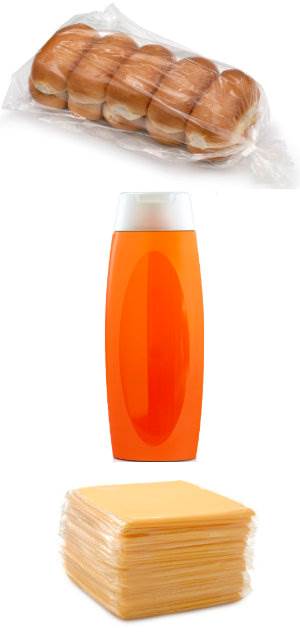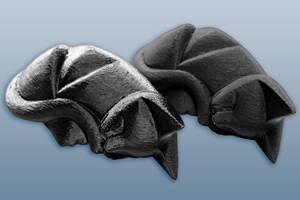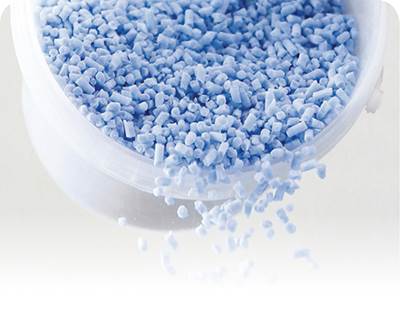Polyolefin Additives: Pushing the Limits in Films & Molded Parts
Advances in nucleators, compatibilizers, fillers, stabilizers, and more elevate performance of polyolefins.
Several interesting developments in additives that boost the performance of polyolefins have surfaced in the first half of this year, some of which were presented at SPE’s International Polyolefins 2014 conference held in Houston this past February.
Among them are an unusual nucleating agent that changes the morphology of HDPE and new coupling agents specially designed for natural-fiber-filled PP and PE wire and cable. There are also ultrafine functional fillers for enhanced performance of LLDPE and biobased LDPE films. Stabilizers that reportedly impart higher UV and thermal stability than their predecessors are also new for both thin-wall PP injection molding and for TPO auto interiors and building/construction.
Other notable additive introductions include a specialty additive masterbatch that offers
high-barrier properties in PP food packaging; halogen-free flame retardants for polyolefin films and other thin-wall applications; a slip additive for long-term stability of polyolefin films and caps/closures; and a new processing aid for PE films.
‘BREAKTHROUGH’ HDPE NUCLEANT
An unusual development underway at Milliken Chemical, Spartanburg, S.C., involves a new nucleating agent for polyethylene that produces what is said to be a crystalline orientation never before seen in fabricated parts.
Milliken senior scientist Darin Dotson explains that tuning the physical properties of PE resins
and products has traditionally involved strategies such as altering the polymer architecture with
catalysts, adding comonomers, changing the molecular-weight distribution, introducing resin
branching, and modifying the conditions used during melt processing. Far less studied has been the use of nucleating agents to change the semi-crystalline morphology of PE, Dotson says.
Milliken launched the first-ever nucleating agent for PE in 2006. Called Hyperform HPN-20E
(referred to in Dotson’s SPE paper as N-1), this additive has been shown to decrease the WTVR in LLDPE and HDPE films and rigid packaging and to enhance optics of blown films. It also reduces radial shrinkage, enabling cycle-time reductions in extrusion blow molding and injection molding of some parts. Further, it promotes pigment leveling, which translates into reduced warpage.
Said Dotson, “Physical properties of PE depend on its orientation. Without nucleation, PE will crystallize into spherical objects with no directed orientation. Addition of HPN-20E directs the
crystalline growth of the PE in a transverse direction (TD).” One result is reduced TD shrinkage.
Novel developmental nucleating agent N-2 directs crystal growth in the machine or flow direction (MD), and reduces shrinkage in that direction. Milliken has field tests underway and sees a high probability of commercial introduction before year’s end. Meanwhile, data so far indicate that this nucleating agent could position PE to compete in new applications. Initially,
most would involve PE resins with specific gravity of above 0.94, primarily for injection and blow molding of rigid containers, crates, pallets, and totes.
HDPE nucleated with N-2 shows up to 50% increase in flexural modulus and up to 30° C higher HDT. Also cited are faster cycles and leveling of pigments, resulting in less warpage. According to Dotson, properties of N-2 nucleated HDPE parts approximate those made from PP impact copolymers. Moreover, with the addition of N-2, typical in-plane shrinkage of PE resins is reduced significantly, particularly in the MD. Thus, Dotson believes it may be possible to process N-2 nucleated HDPE on PP equipment.
Because one reduces shrinkage in MD and the other in TD, Milliken sees potential in using blends of N-2 and Hyperform HPN-20E to fine-tune properties for particular applications. Dotson notes that N-2’s unique crystalline orientation in HDPE parts has the potential to elicit new and valuable properties in applications such as pipe, blown film, bottles, drums, rotomolding, sheet, thermoformed articles, extruded tubes, and nonwoven fibers.
COMPATIBILIZING PP & PE
Addivant, Danbury, Conn., the year-old company formed from the antioxidant and UV stabilizer business of Chemtura, unveiled three new additions to its line of Polybond chemically modified polyolefins that serve as coupling agents and compatibilizers.
One is Polybond 7200, a maleic-anhydride-grafted PP homopolymer specially designed for natural-fiber-filled PP compounds, where it has been shown to optimally disperse polar fillers (wood flour, wood fibers, hemp, rice hulls, flax, kenaf, and wheat straw) in nonpolar PP.
Recent field trials confirmed this coupling agent’s effectiveness in achieving high levels of filler coupling. In addition, this compatibilizer has been shown to increase flexural strength and
modulus by 60% and 25%, respectively; to reduce creep by a factor of 10; and cut water uptake in half. As a result, it is now being adopted in a broad range of applications from injection molded automotive components and household goods to extruded profiles for building/construction and laminated packaging.
New Polybond 3249 and 3349 are maleic-anhydride-modified LLDPE coupling agents that reportedly offer superior property retention and melt-flow stability in wire and cable compounds with halogen-free flame retardants such as magnesium hydroxide or ATH, while achieving excellent FR additive dispersion. They are said to be best suited to applications requiring higher elongation values with reduced gel formation during mixing.
SUPER-FINE FILLERS FOR FILMS
Imerys Carbonates, Roswell, Ga., has a new ultrafine-particle (1.5-micron), surface-treated, wet-ground marble that can be used in most thermoplastics but has been shown to work especially well in PE films, including ones made with biobased resins.
Supercoat CaCO3 is treated with an organic coating that is designed to reduce moisture and facilitate dispersion in organic systems. It has been shown to improve the processing and tear strength of biopolymer blown films, such as Green PE from Braskem (U.S. office in Philadelphia).
For example, adding up to 25% Supercoat CaCO3 to Braskem’s SBC818 Green LDPE has been shown to boost bubble cooling due to the filler’s higher thermal conductivity. This, in turn, increases bubble stability and throughput. This additive loading is also said to improve dart impact strength with minimal effect on tensile strength and elongation, and to improve film surface finish and printability.
Grace GmbH (U.S. office in Columbia, Md.) has developed a micronized silica for PE films. Sylobloc P 05 is a synthetic amorphous, micronized product based on a new silica technology developed by Grace. It is designed for use by masterbatch producers, compounders, and film processors and is said to be well suited to high-end LLDPE film applications.
According to Grace researchers, its fi ne particle size and narrow size distribution are designed to meet technical challenges of clear, antiblocking LLDPE fi lms where high optical transparency requires a low antiblock dosage.In field tests in LLDPE film, it reportedly is more efficient in antiblocking performance than talc and imparts 15% lower haze than talc or diatomaceous earth at the same dosage, along with as superior quick-slip release.
HEAT STABILIZERS TACKLE CHALLENGES
Songwon International Americas, Houston, which launched its new Songxtend line of proprietary heat stabilizers for polyolefins at K 2013 (see Feb. 2014 Close-Up), has introduced two new additions for thin-wall PP injection molding and controlled-rheology
(CR) PP fibers. According to Songwon researchers, the standard processing stabilizer package of phenolic and phosphite antioxidant is not suitable for color-critical PP fiber and thin-wall applications due to its high contribution to gas fading. A good balance of low initial interaction with peroxides in the CR step, combined with good processing stability during injection molding or fiber spinning, is said to be quite difficult to achieve, particularly if
low-color contribution is desired.
But new Songxtend 1141 is said to offer an excellent balance of processing stability, low peroxide interaction, low color, and low gas fading compared with typical stabilizer packages for thin-wall grades and nonwovens as well as PP continuous filament and spunbond fibers. New Songxtend 1140 has a similar performance profile but is said to offer “best-in-class” initial color and color development. For both stabilizers, Songwon says long-term thermal stability and UV stability can easily be adjusted without impacting other performance criteria by adding a hindered amine light stabilizer (HALS), such as SaboStab UV 119, offered by Songwon through a new cooperation with Italy’s Sabo S.p.A. (see Sept. ’13 K preview).
Meanwhile, two innovative stabilizers developed by Cytec Industries, Inc., Woodland Park, N.J., are designed for TPOs. One is for auto interiors, where OEMs are demanding excellent
stability under extreme UV and thermal conditions to ensure long service life in any climate. The other targets building and construction applications such as roofing membranes, siding, and trim, for which warranties are now being extended to 30 yr.
Cytec’s new Cyasorb Cynergy Solutions “V” Series stabilizers for automotive and B877 stabilizer for building/construction are based on new-generation HALS chemistry. They exhibit several times greater solubility and compatibility in nonpolar resins (TPO/PP), which allows for higher concentrations and increased performance. This is reportedly achieved with little appreciable blooming compared with first-generation HALS, which showed noticeable blooming in PP, even at just 0.30% stabilizer level.
Cytec researchers discussed the excellent thermal stabilization efficiency of the V Series for automotive TPOs, as evidenced by color and gloss retention. Under exposure to 150 C for 2000 hr, this additive maintained color (Delta E less than 1 unit) and 80% retention of the TPO’s initial gloss. High weathering stability is also exhibited: After 3000 kJ exposure (SAE J2527), this stabilizer demonstrated total color change (Delta E) less than 1 unit and gloss
retention above 90%. It also reportedly off ers very low VOC emissions and fogging.
Cytec’s new B877 stabilizer boasts high-weathering performance as well as extended thermal stabilization in TPO and PP for building and construction. After 10,000 hr of accelerated xenon-arc weathering (ASTM G155), low-modulus TPO containing 20% Mg(OH)2, 3% TiO2, 0.15% antioxidant, and 1.3% B877 exhibited a total color change of just under one unit.
In another study, two commercial low-modulus TPO samples were compared with a low-modulus TPO containing 0.75% B877 and 4% TiO2. After 10,000 hr of xenon-arc weathering (with water-spray cycle—Florida simulation), the commercial samples retained less than 35% of their original breaking strength while the sample with B877 retained 85%.
OTHER NEW & NOTABLE ADDITIVES
A proprietary barrier-additive masterbatch consisting of 40% functional fillers predispersed in a universal polymeric carrier has been developed for PP food packaging by Ferro Corp., Cleveland. Ferro says Optum EV-0437BC can replace or partially substitute for more expensive high-barrier systems such as coatings, multi-layer structures, or metalization.
The additive can be incorporated by melt processing in most processes used to develop mono- and multi-layer structures in flexible and rigid packaging. It is reportedly best suited for food packaging, where Ferro says it can increase product protection and shelf-life. Ferro reports that compared with other commercial fillers such as unmodified or organically modified nanoclays, new non-nanoscale Optum additives reduce permeability to water vapor and other gases such as oxygen in PP films. Moreover, this additive shows excellent barrier performance under steam sterilization conditions.
Croda in Edison, N.J., has refined a novel saturated fatty-acid amine slip agent that boasts long-term stability to protect against changes in taste and color in PE and PP film and closures. Incroslip SL is said to provide friction and scratch performance similar to erucamide and oleamide but with vastly improved oxidative stability and superior organoleptics. In film trials, this saturated slip agent reportedly shows far better color stability than erucamide. When exposed to sunlight, film containing SL shows no loss of slip performance, unlike films
containing erucamide. On heating and exposure to UV, PP plaques containing SL do not produce a visible bloom. Moreover, this additive shows excellent barrier performance under steam sterilization conditions.
Thor Specialties Inc., Shelton, Conn., has developed two unusual phosphonate flame retardants for polyolefin films and thin-wall molding, where they reportedly can fill the gap
between conventional halogenated FRs and halogen-free aminoether-based additives, which are said to be limited in performance.
Aflammit PCO 700 and PCO 800 have been tested extensively in PE and PP films. They have been shown to impart several benefits, allowing for the first time production of halogen-free films capable of meeting the most demanding fire tests at any thickness while retaining transparency and excellent mechanical properties.
These phosphonates also have potential applications in thicker polyolefin parts that need to pass specific fire tests in which alternative halogen-free technologies, such as intumescent blends, cannot do the job. When combined with a specific, patent-pending nitrogen donor, Aflammit FRs reportedly offer performance that surpasses even that of traditional bromine/antimony systems, allowing for a higher level of safety at a lower dosage.
Daikin Chemicals, Orangeburg, N.Y., has a new processing aid for PE film that can be used in lamination film without any gel formation. Dai-El DA-910 is based on a functionalized fluoroelastomer and is specially tailored for mLLDPE and LLDPE-rich blends. It reportedly eliminates melt fracture at 50% lower use levels than the previous generation additive and is an
excellent scavenger of die buildup.
Related Content
Graphene-Enhanced Stretch Film Billed as 'World First'
Thinner, stronger films to be commercialized by Brazil’s Packseven in August.
Read MorePFAS-Free Processing Aid for Blown Film Extrusion
Ampacet’s new processing aid said to perform as well as fluoro-based PPAs in blown film.
Read MoreMasterbatches Reduce Gloss in PLA and PETG 3D Printed Products
Insight Polymers & Compounding’s two low-gloss additive masterbatches shown to boost appearance of 3D printed objects.
Read MoreUnderstanding the ‘Science’ of Color
And as with all sciences, there are fundamentals that must be considered to do color right. Here’s a helpful start.
Read MoreRead Next
K 2013 Preview: Materials & Additives
The K 2013 show will present a broad range of engineered plastics materials, including thermoplastic composites, as well as additives. Automotive and electronic applications will be the main targets, as well as medical, packaging, lighting, and construction.
Read MoreAdditives News at K 2013
More economical, higher performing, sustainable, and more finely tailored to specific applications—those features summarize the key advantages claimed for new additives showcased at K 2013.
Read MoreAdvanced Recycling: Beyond Pyrolysis
Consumer-product brand owners increasingly see advanced chemical recycling as a necessary complement to mechanical recycling if they are to meet ambitious goals for a circular economy in the next decade. Dozens of technology providers are developing new technologies to overcome the limitations of existing pyrolysis methods and to commercialize various alternative approaches to chemical recycling of plastics.
Read More

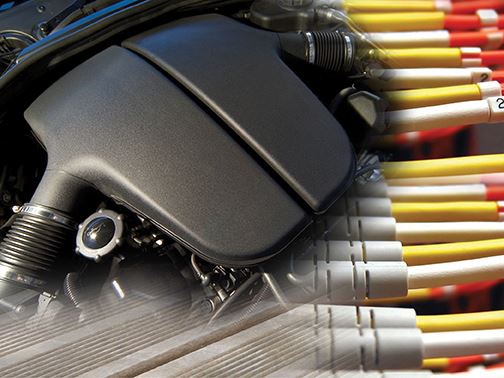


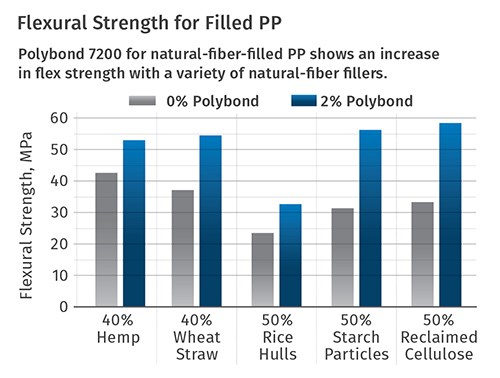
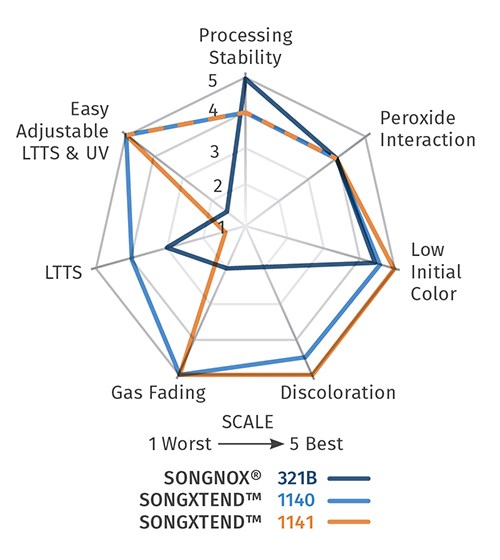
















.png;maxWidth=300;quality=90)






